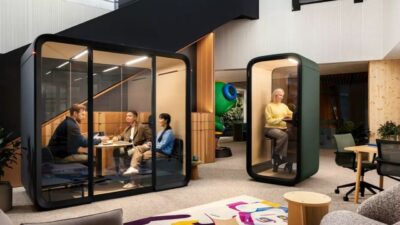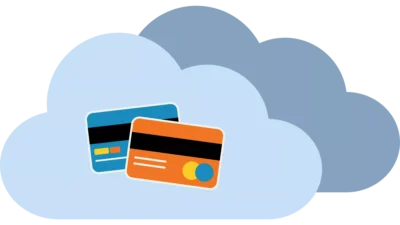When the world shut down in 2020, Elearning came into the spotlight. Even though this learning approach was used in corporate offices before 2020, it was only after COVID-19 that the world understood its importance.
Elearning is revolutionizing the way knowledge is acquired, making information more accessible, flexible, and efficient than ever before. However, organizations must understand that Elearning will also be effective when it is appropriately implemented. The learning experience is a key component of every learning and development program, including Elearning.
But how can organizations implement Elearning effectively to improve the learning experience of every individual? The following article will guide you to find the answer.
What is Elearning?
Elearning is a structured learning program that is delivered electronically. It uses digital technology to deliver educational content. Elearning occurs through various learning mediums such as computers, tablets, smartphones, and the Internet. It is provided through online courses, webinars, virtual classrooms, and interactive modules.
One of the crucial benefits of Elearning is that it encourages self-paced and remote learning. According to statistics, the Elearning market is projected to grow by 14% CAGR between 2023 and 2024. As discussed earlier, this growth projection is based on the increasing popularity of online learning after 2020.
Today, it is almost pivotal for organizations to implement Elearning into their corporate training because of its various benefits. The following paragraph discusses them.
Benefits of E-learning:
Accessibility: Elearning can overcome geographical restrictions. It allows learners from all around the world to access educational content without needing to be physically present. It is particularly helpful for organizations with a remote workforce with employees from around the world.
Flexibility: This form of learning offers flexibility of time. Learners can schedule their learning timetable based on their convenience and progress. For instance, a learner can schedule their course after work hours when they are stress-free and can entirely focus on the concept.
Interactive: Elearning modules are interactive and have elements such as quizzes, simulations, and multimedia. This makes the learning process engaging. Non-interactive modules don’t encourage learners to complete the module. However, if the module is interactive, the learners will feel motivated to complete it.
Scalable: Modern Elearning modules can accommodate a vast number of learners. It is suitable for small-scale and large-scale learning initiatives. A number of users can simultaneously engage with the learning modules.
Personalization: Elearning platforms use data and analytics to personalize the learning experience, tailoring content to individual learner needs and preferences. For example, Elearning uses artificial intelligence to analyze learner behavior and tailor a program specifically for them.
Elearning in the Workplace:
The world is changing, and the way business is conducted is also constantly evolving. This means that organizations will have to constantly provide training to their employees.
Traditional training methods are time-consuming because one has to be physically present. However, this problem is solved with the help of Elearning. Elearning makes people productive in the workplace. Moreover, it is also an excellent solution for organizations with employees in different parts of the world. So, it is crucial for any organization to implement Elearning methods for its growth.
Strategies to Elevate Your Elearning Experience
By now, you know that Elearning is an inevitable and positive change. But how can organizations implement this strategy effectively?
Organizations can use the following strategies to make the most of Elearning:
Immersive Learning with Virtual Reality:
Imagine stepping into a new world at your desk. This is the power of virtual reality. It might sound like science fiction, but virtual reality turns this imagination into reality. VR can immerse learners in a way that traditional methods can’t match. It offers the audience an experience that goes beyond the ordinary.
Virtual reality offers learners interactive modules that involve actively experiencing the learning process. It makes complex concepts easy to understand. For instance, an organization wants to implement a new sales strategy with the help of VR. Non-interactive Elearning may bore the employee. If the concept is difficult to understand, employees may also feel confused. But VR makes the information easier to grasp.
Gamification: Learning should never be a chore. Learning will be fun when gamification elements are incorporated into Elearning programs. Elements such as badges, points, and leadership boards make the process fun and interactive.
When organizations foster healthy competition among the learners, they will be inclined towards learning and trying to stay ahead in the game. Gamification also boosts motivation and provides instant feedback, contributing to a more enjoyable and practical learning experience.
Emotional Intelligence: Emotional intelligence is crucial in the learning process. Recognizing and managing emotions is a skill that enhances personal well-being and significantly impacts one’s ability to learn and collaborate.
Emotions are integral to human experience and play a profound role in learning. Organizations can create a positive and supportive learning environment by integrating emotional intelligence into the Elearning programs.
In this way, learners do not just absorb information and develop essential life skills that can improve their overall well-being and effectiveness. For instance, organizations can depict a real-life situation with the help of VR and teach employees soft skills to help them respond to the situation. These exercises help garner positive relationships with employees and clients.
Bite-Size Lessons with Microlearning: In this Elearning strategy, small bite-size content is delivered so that it is easy for the learner to grasp the information. These pieces of content are designed to convey specific information or teach a single concept. This helps overcome information overload as learners absorb one nugget of knowledge at a time.
These short and targeted lessons are also more engaging than long-form content, and hence, they capture the learner’s attention quickly. Moreover, they also increase the information retention power. When learners repeatedly encounter the same bite-size concept, it becomes ingrained in their memory.
Conclusion
Elearning is a transformative revolution reshaping how people acquire knowledge and skills. Elearning has opened the doors to a world of knowledge waiting to be explored.
However, organizations must understand that there is no one-size-fits-all approach to Elearning. The strategies have to be tailored based on the unique needs of the learners. By effectively implementing Elearning strategies based on specific needs, one can take their organization to new heights and unlock the full potential of their employees.




